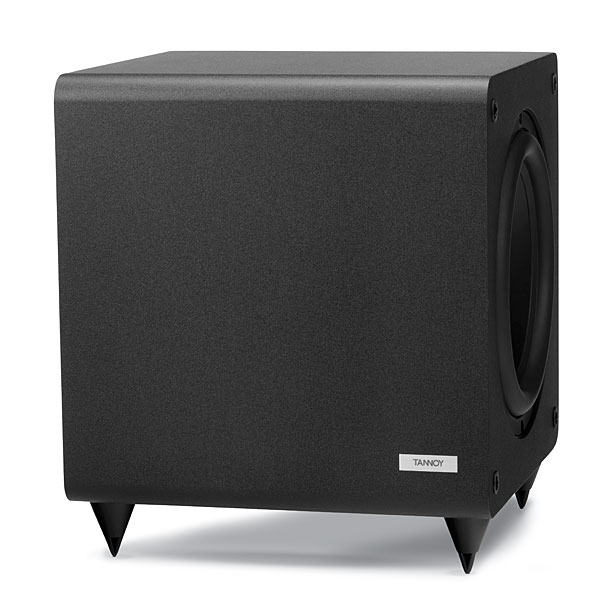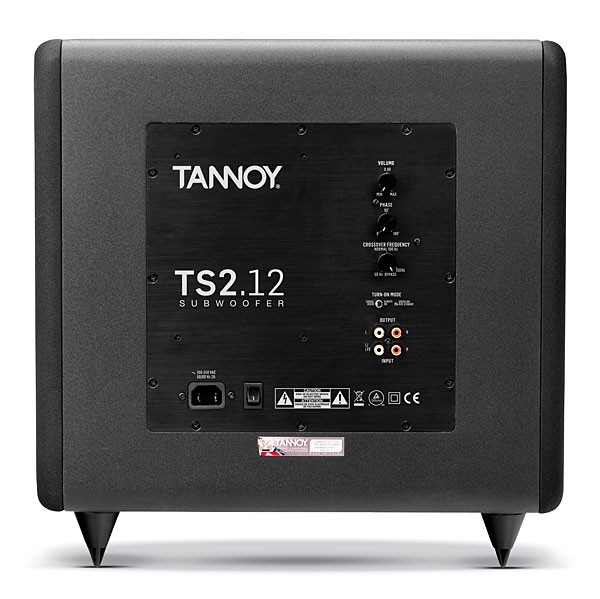Tannoy Precision Speaker System Page 2
The Sharper Image
Though the Precisions lacked any gross deficiencies, one of their strengths rocketed to the top of the list: imaging. I have never heard any speakers that image better than these and few that image as well. They produced such solid and vivid objects within the soundfield—or the soundstage, with just a pair of monitors—that it was hard to go back to my more conventional non-coaxial reference speakers afterward (and that rarely happens). The overall balance was slightly tilted toward revealing, but not excessively so: All well-recorded content sounded as good as it should, and some substandard content flourished in spite of itself. The top end offered as much air and sparkle as the source material allowed. The midrange was fully fleshed out, with loads of vocal timbre, which was all the more startling when coupled to the monitor’s and center’s imaging prowess. Bass was acceptable for the enclosure sizes and allowed for crossover points low enough to prevent voices from localizing through the sub, though the speakers did benefit from sub reinforcement in any music with more bottom end than a string quartet. The sub offered a combination of output and control that couldn’t be faulted. I’d be glad to live with it.

The Tall Man—a brooding horror movie on the always disturbing theme of disappearing children—combined with the 6.1 monitor to startle me a couple of times. In both cases, vehicle noises (bike or car) quickly faded up in the surround left channel and panned rapidly into the front center channel. The contrast between these sudden shocks and the movie’s many spells of low-key disquiet kept me on edge. The Precision’s natural midrange response kept vocals up front and clear while its midbass brought out the sonority of the soundtrack’s low strings. As the soundfield filled with rain, wind, machinery, and an angry mob, the system never missed a chance to be immersive, and its relentless focus heightened the emotional impact of every effect.
Take Shelter enters the psyche of a man whose nightmares and panic attacks were filled with impending storms. This was yet another movie that bounced from ominous near-silence to sonic violence and back again. Storms imagined by the haunted protagonist whipped through all channels, and with four imaging prodigies in the four corners of the soundfield, the tumultuous effects gripped and dominated the room. The sub was especially impressive here, producing lots of bass output, but of appropriate proportions. It added to the dramatic effects without calling attention to itself, which is quite a feat for a sub reproducing the bottom end of a hurricane.
The most prominent effects of Being Flynn were sheer acting, with Robert De Niro as a homeless aspiring novelist who torments his son. The 6C came to the fore, delivering voices with loads of warmth and timbre. It avoided thinning out when De Niro’s voice rose to a roar, as it does throughout the movie. Music popped gently out of the soundtrack, giving the monitors their chance to shine.
Torn Partnership
Bernard Herrmann’s never-used score for Alfred Hitchcock’s Torn Curtain severed relations between the Maestro and the Master of Suspense in 1966 but was re-recorded a dozen years later with Elmer Bernstein conducting London’s Royal Philharmonic Orchestra. It’s easy to find on used vinyl. The 6.1 monitor thrived on the peculiar instrumentation of this “lost” masterwork, scored for 12 flutes, 16 horns, 9 trombones, 2 tubas, 2 sets of tympani, 8 cellos, 8 basses—and no violins or violas. The flute section, routinely submerged in most orchestral recordings, was critical here, carrying the themes and voicings normally allocated to the higher strings. The Tannoys gave the massed flutes the tone color and prominence they needed and also excelled at the easier task of delivering brass instruments in the brain-searingly intense farmhouse murder scene. While the music didn’t have the catchy theme Hitchcock and the studio executives wanted, it was emotionally charged and atmospheric. And as a fan of both Hitch and Herrmann, I was often able to mentally summon the images that would—and should—have gone with it.

The Johnny Hartman Collection 1947–1972 double-CD set is inevitably a sonic mixed bag, but the best parts are very good indeed, especially those from the untitled album by Hartman and John Coltrane, engineered by Rudy Van Gelder. The crooner’s rich baritone was so thoroughly imaged by the two Precision monitors that I might have mistaken it for center-channel mono if I hadn’t known better. Only great speakers pull off that trick. What was more remarkable was that the center image didn’t budge much with lateral head moves of a few inches to either side. I really had to migrate to the far end of the sofa before the voice began to move with me. The monitors also managed to detach the voice from the cheap echo appended on some albums. Illinois Jacquet’s low-register opening notes in “Stairway to the Stars” were astonishingly gravelly in the 6.1’s high-res treatment. I’d never noticed this before despite long familiarity with the original album (I Just Stopped By to Say Hello).
If these speakers have any downside, it’s an analytical quality that surfaces occasionally. They will not do much to varnish the truth. Whether this is good or bad is decidedly a question of taste, not performance. In a decidedly non-audiophile recording like George Harrison’s Phil Spector-ized All Things Must Pass, a little sugarcoating would have benefitted the most trebly Wall of Sound tracks. Even so, the monitors could extract an amazing vividness from some elements, like the throaty fuzztone wah-wah guitar on “Wah-Wah” (I’ll go out on a limb and say it’s Eric Clapton). The less stylized tracks, like “Beware of Darkness” and the serene title track, came through as glowingly as they ever have.
The Tannoy Precision 6.1 and 6C are formidably high-performing speakers. I have a feeling that anyone hearing them would be impressed, especially in direct comparison with more conventional non-coaxial speakers—Tannoy really has refined its Dual Concentric act to near perfection. If these speakers were a standup comic, they’d be Jerry Seinfeld. The TS2.12 subwoofer would also compare well to similarly priced products and comedians. I’m especially impressed that Tannoy has achieved such indisputably high-end, and—well—precise results at less than 600 bucks per monitor and just over a thousand for the sub. Tannoy’s Precision is a speaker system you’ve got to hear.
- Log in or register to post comments




































































